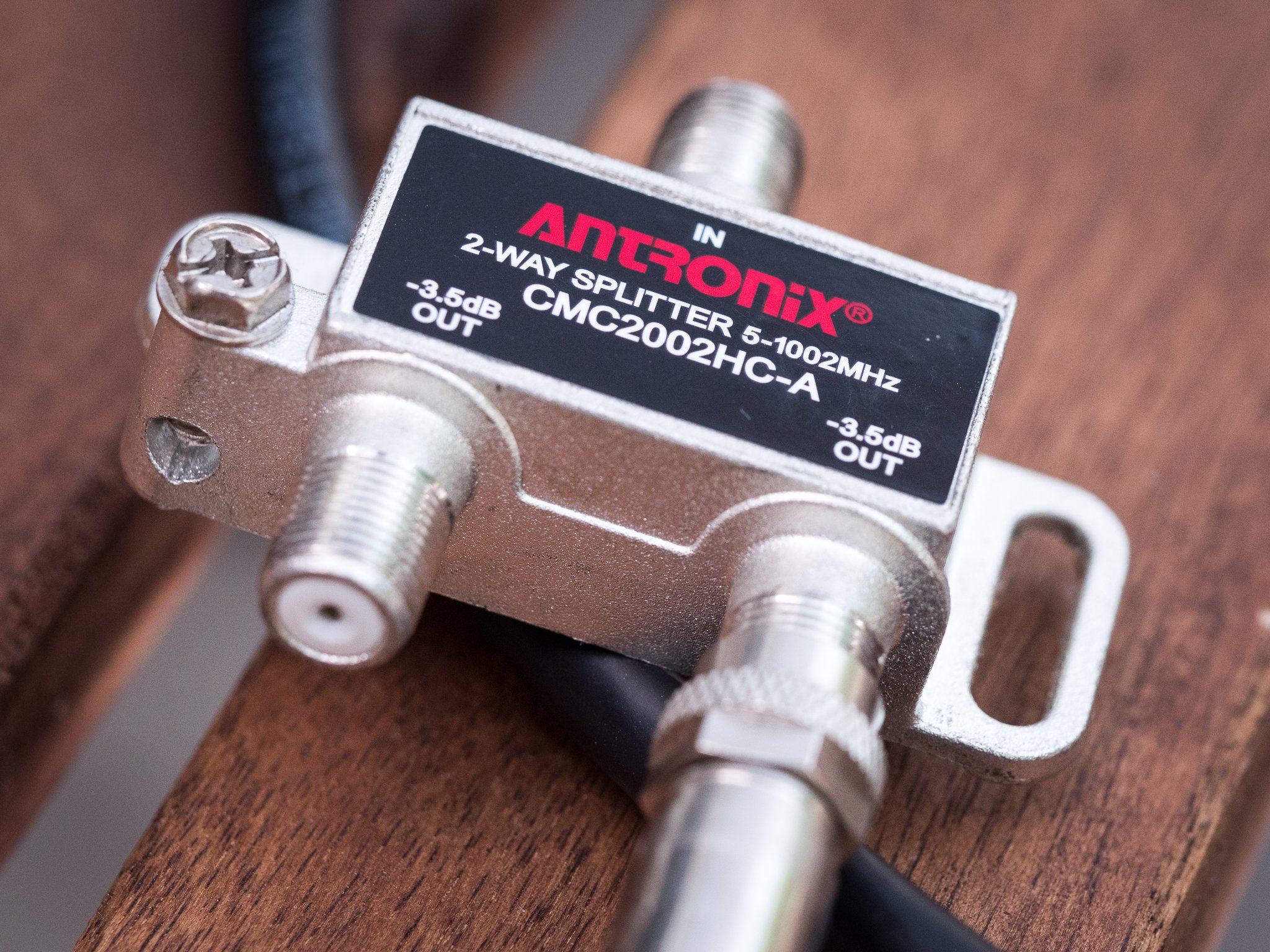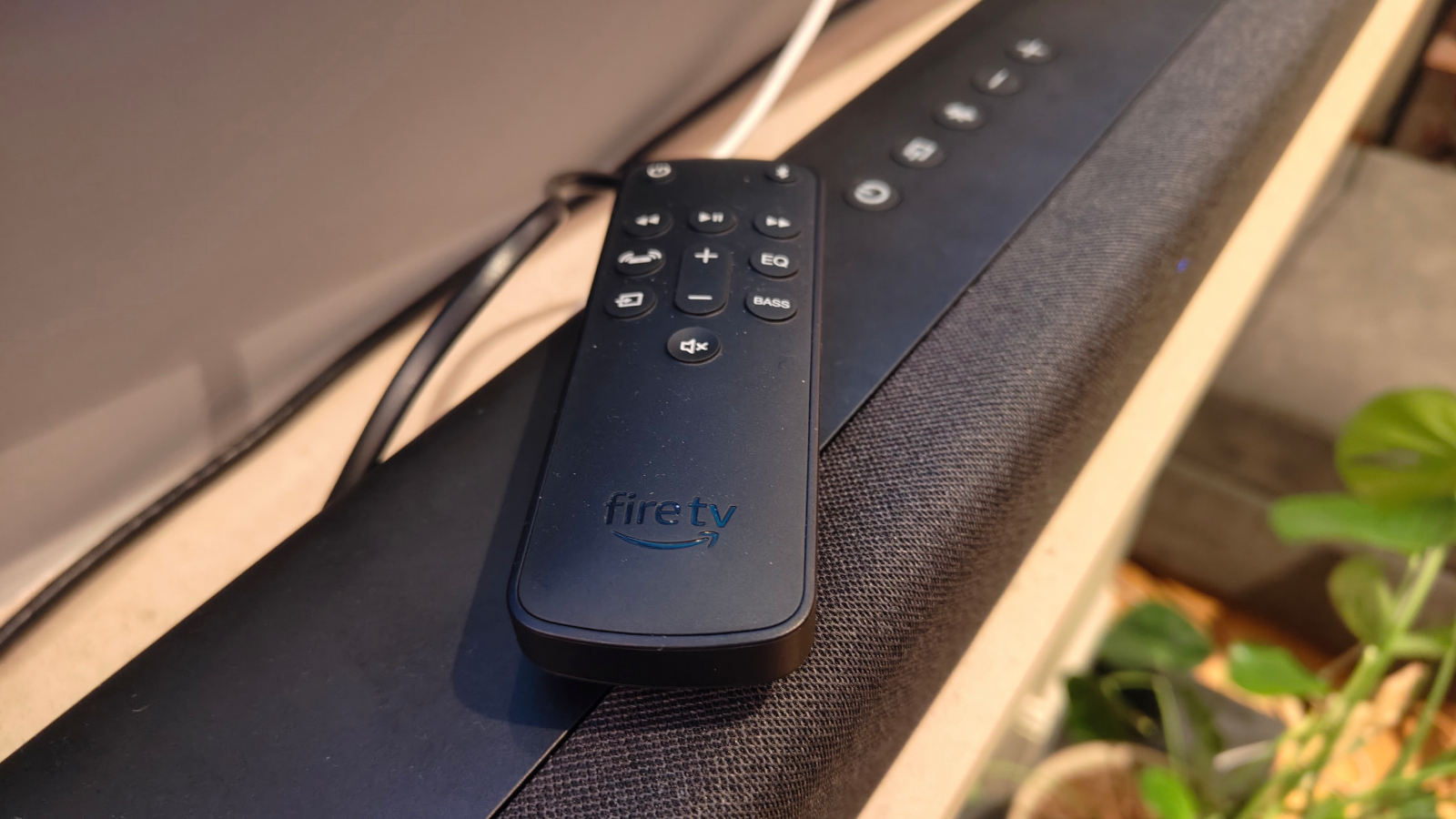Is it OK to use a splitter with an antenna?
You can feed multiple televisions from one antenna using a splitter, but there are a few things to know

Most households have more than one television. But you'll almost never see a home with more than one TV antenna. (And there's a 50-50 shot if you've got a bunch of antennas sticking out of your roof you're on a list somewhere.)
That's because it makes a lot more sense to split the signal and send it out to every television or tuner — and that's easy using what's commonly called a splitter. But not all splitters are the same (just like every setup or every home isn't the same) so you need to know a few simple basics before you go cutting cables or you might not have great results.
Powered versus passive
There are two types of splitters: powered and passive. The names give away how they're different — a powered splitter gives some amplification to your TV signal, and a passive splitter is just a straight passthrough. The type you need depends on your particular setup.
If you need to boost the signal to every tuner you're splitting the signal out to, you can use a powered splitter. This will do the same thing a basic amplifier does and it does it on every output. You might need to do this if your antenna it pretty far from all of the places you need to use it or if your house is a bit older and doesn't have a great electrical ground. Where I live there are a lot of really old homes that use wire mesh and plaster for interior walls instead of drywall, and that can mess with a television signal, too. You can pick up a good powered splitter, like this one from Channel Master , for about $30 for a two-port model.
If you don't need to amplify the signal to every set you can use a passive splitter. If you need to amplify the signal to one tuner but not the other(s), you can use a passive splitter with a stand alone amplifier on any of the output signals. You don't want to use amplification unless you need to because of what's called overmodulation, which can make reception worse or cause a noisy picture. Instead, use a passive splitter with an amplifier on the downside to the tuner that needs it. Passive splitters are inexpensive, and you can buy a two-port model like this one from Channel Plus for about $5.
A few other tips
- Using a passive splitter causes a bit of signal degradation. This is known as insertion loss or attenuation. And while it's not usually enough to matter, it's still present.
- You can use a splitter to feed another splitter. The signal can be split as many times as you need, but each passive splitter adds more insertion loss, and multiple powered splitters can cause overmodulation.
- Powered splitters will need to be close to an electrical outlet. They use a small transformer that plugs into the wall, about the same size and shape as a phone charger. They usually connect to the splitter using coaxial cable but can come with their own cord.
- Powered splitters come in different strengths. Look and make sure you're not buying something marked as "high gain" unless you need a high gain amplifier, and vice-versa for low gain.
- Splitters can also be combiners. Two or more signal wires can come in and one goes out. Handy for wiring multiple rooms inside your walls or attic.
- A splitter might cause you to need a filter. Every time you break the signal, even when using high-quality connectors, you run the risk of introducing electrical noise. If adding a splitter makes things get a little fuzzy, try a filter as your first troubleshooting step.
- Don't use a splitter for your internet signal. Everything here is for television signals, not the internet from your ISP. This could be an issue if your house it prewired with coaxial cable and you use it for internet. Talk with your internet provider before you go cutting and splitting anything.
There's really not a lot to a splitter. You feed it with the signal from your antenna and it branches out to multiple outputs so you can send one signal to multiple tuners. If your house is wired with coaxial cable inside the walls you probably have one or more passive splitters in use already.
Get the What to Watch Newsletter
The latest updates, reviews and unmissable series to watch and more!











